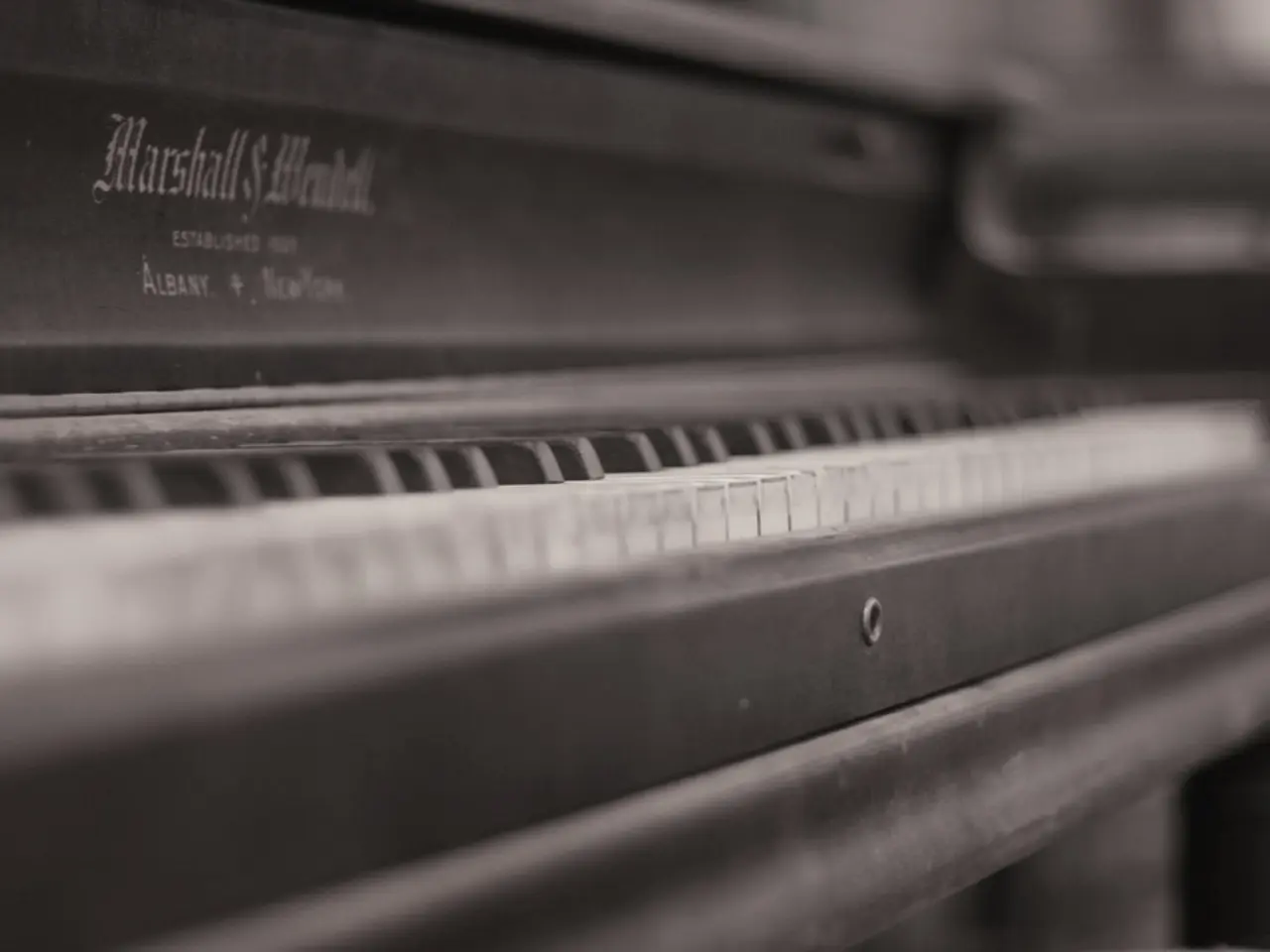Sixty essential emblems of written music you ought to grasp
=================================================================================
In the world of music, sheet music serves as a universal language that allows composers' intentions to be translated across time and cultures. This article aims to provide a comprehensive guide to 60 of the most common musical symbols essential for reading notation.
Note Symbols (indicate pitch and duration)
- Whole Note (Semibreve): lasts 4 beats
- Half Note (Minim): lasts 2 beats
- Quarter Note (Crotchet): lasts 1 beat
- Eighth Note (Quaver): lasts 1/2 beat
- Sixteenth Note (Semiquaver): lasts 1/4 beat
- Thirty-second Note (Demisemiquaver): lasts 1/8 beat
- Sixty-fourth Note (Hemidemisemiquaver): lasts 1/16 beat
Rest Symbols (indicate silence)
- Whole Rest: silence for 4 beats
- Half Rest: silence for 2 beats
- Quarter Rest: silence for 1 beat
- Eighth Rest: silence for 1/2 beat
- Sixteenth Rest: silence for 1/4 beat
- Thirty-second Rest: silence for 1/8 beat
- Sixty-fourth Rest: silence for 1/16 beat
Clefs (indicate pitch range)
- Treble Clef (G clef): denotes higher pitched notes
- Bass Clef (F clef): denotes lower pitched notes
- Alto Clef (C clef): used mainly for viola
- Tenor Clef: another C clef variant for mid-range instruments
Accidentals (alter pitch)
- Sharp (♯): raises a note by a half step
- Flat (♭): lowers a note by a half step
- Natural (♮): cancels previous accidentals, restores note
- Double Sharp (𝄪): raises by two half steps
- Double Flat (𝄫): lowers by two half steps
Dynamics (volume)
- Pianissimo (pp): very soft
- Piano (p): soft
- Mezzo-piano (mp): moderately soft
- Mezzo-forte (mf): moderately loud
- Forte (f): loud
- Fortissimo (ff): very loud
- Crescendo (<): gradually louder
- Decrescendo or diminuendo (>): gradually softer
Articulations (note execution)
- Staccato (dot above note): short and detached
- Legato (slur line): smoothly connected notes
- Accent (>): emphasize the note
- Tenuto (–): hold note for full value
- Marcato (^): marked or stressed
- Fermata (𝄐): hold note longer than its value
Ornamentations (embellishments)
- Trill (tr): rapid alternation between note and next higher
- Mordent: rapid single alternation with note below
- Turn: four-note figure around main note
- Grace note: quick note before the main note
- Slide (portamento): smooth glide between notes
Time Signatures & Meter
- Common time (4/4): four quarter-note beats per measure
- Cut time (2/2): two half-note beats per measure
- Simple meter (e.g., 3/4): beats divide into 2
- Compound meter (e.g., 6/8): beats divide into 3
Other Symbols
- Repeat signs (||: :||): repeat section of music
- Da capo (D.C.): go back to beginning
- Dal segno (D.S.): go back to sign (§)
- Coda: indicates a concluding section
- Fine: end of piece or section
- Breath mark (comma): take a breath or slight pause
- Tie: connects two notes of same pitch, held together
- Slur: connects different notes smoothly
Key Signature Symbols
- Group of sharps or flats at beginning indicating key
- Major and minor key signatures
Additional Notations
- Chord symbols (e.g., Cmaj7, G7): indicate harmony
- Tempo markings (Allegro, Andante): speed of music
- Percussion notation: various note heads indicate instrument or technique
These symbols provide a fundamental vocabulary to interpret sheet music across genres and instruments, ensuring that the music is played the same way every time, regardless of the artist or location. Each symbol has its unique purpose, contributing to the overall interpretation of the piece.
Engaging in online education platforms can open up opportunities to learn about music theory, enabling individuals to better understand and analyze pieces based on the symbols and notations detailed in this guide. Such knowledge can be leveraged for self-development and improvement in entertainment, be it through playing an instrument, composing music, or simply appreciating the intricacies of a composition. Furthermore, a deeper understanding of music education and self-development can broaden the scope of entertainment, moving beyond just passive consumption to active exploration and participation.




